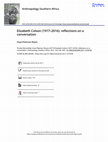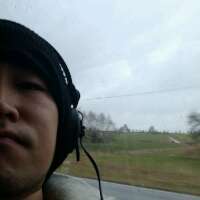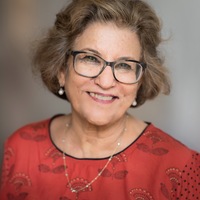Books by Anya Peterson Royce
Psycho Cultural Analysis of Folklore (In memory of Prof. ALAN DUNDES) Volumes 1& 2, ed. P Chenna Reddy, B R Publishing Corporation, Delhi, 2018, 2018
Examines the creative, collaborative process of the Pilobolus Dance Theater company
Examination of common processes in research and in teaching. This was the Sonneborn lecture given... more Examination of common processes in research and in teaching. This was the Sonneborn lecture given on the presentation of the Tracy M. Sonneborn Award for Distinction in Research and in Teaching by Indiana University.
CaMP Anthropology blog, 2017
Isthmus Zapotec responses to the September 2017 8.2 magnitude earthquake. Roles of poets, painte... more Isthmus Zapotec responses to the September 2017 8.2 magnitude earthquake. Roles of poets, painters, writers, musicians and the Comite Melendre community organization in providing food and shelter and workshops for children and youth.
This is the 2007 translation of my book The Anthropology of Dance into Indonesian.
translated by Magda Zografou.
This is a translation in Korean of the 1977 original Anthropology of Dance book. Korean translati... more This is a translation in Korean of the 1977 original Anthropology of Dance book. Korean translation by Mae-ja Kim
Polish translation of the Anthropology of Dance with a new Epilogue and new photographs; translat... more Polish translation of the Anthropology of Dance with a new Epilogue and new photographs; translated by Jacek Luminski.
Polish translation of The Anthropology of Performing Arts; translated by Natasza Moszkowicz
An academic directory and search engine.
ALTAMIRA PRESS A Division of Rowman 8c Littlefield Publishers, Inc. 1630 North Main Street, #367 ... more ALTAMIRA PRESS A Division of Rowman 8c Littlefield Publishers, Inc. 1630 North Main Street, #367 Walnut Creek, CA 94596 www.altamirapress.com Rowman & Littlefield Publishers, Inc. 4720 Boston Way Lanham, MD 20706 12 Hid's Copse Road Cumnor Hill, ...
An academic directory and search engine.
An academic directory and search engine.
This book has been called a landmark text in situating performance, music, dance, and drama withi... more This book has been called a landmark text in situating performance, music, dance, and drama within a global context. It questions approaches to performance that have been predicated exclusively on Western traditions and understandings and provides a gateway to interpreting the mastery and beauty of performance as integral to cultures everywhere.

Powerful and beautifully written, this is the story of the Isthmus Zapotecs of southern Mexico an... more Powerful and beautifully written, this is the story of the Isthmus Zapotecs of southern Mexico and their unbroken chain of ancestors and collective memory over the generations. Mortuary beliefs and actions are collective and pervasive in ways not seen in the United States, a resonant deep structure across many domains of Zapotec culture.
Anthropologist Anya Peterson Royce draws upon forty years of participant research in the city of Juchitán to offer a finely textured portrait of the vibrant and enduring power of death in the Isthmus of Tehuantepec of Mexico. Focusing especially on the lives of Zapotec women, Becoming an Ancestor highlights the aesthetic sensibility and durability of mortuary traditions in the past and present. An intricate blending of Roman Catholicism and indigenous spiritual tradition, death through beliefs and practices expresses a collective solidarity that connects families, binds the living and dead, and blurs the past and present.
A model of ethnographic research and presentation, Becoming an Ancestor not only reveals the luminescent heart of Zapotec culture but also provides important clues about the cultural power and potential of mortuary traditions for all societies.
Papers by Anya Peterson Royce

Anthropology Southern Africa
Elizabeth Colson was the finest ethnographer of the last three generations-certainly the best I h... more Elizabeth Colson was the finest ethnographer of the last three generations-certainly the best I had the good fortune to know, and the better fortune to be mentored by, generously, strictly and for 49 years. Our correspondence began in 1971. Her last letter to me came in June 2016, two months before her death. Elizabeth was known primarily for her work in Africa, 70 years of field research with the Tonga of Zambia, but she was trained solidly in both the American and the British schools of anthropology. Her first work was with the Pomo of northern California. As a graduate student, I read her field notes from that research-15 to 20 typed pages a day-and found them filled with detailed observations and carefully transcribed conversations. As I read, questions would come to mind about what a particular set of observations might mean, only to find her answering that very question in her next paragraph. It was intimidating for me as a very new anthropologist who had yet to do her first long fieldwork. But her nephew put it absolutely right in his eulogy: "When she took a personal interest in you, she expected you to perform to a new standard-hers. If you did, she was generous in her support, advice and sponsorship. She expected us to pursue important careers and causes, creating better lives for those around us" (R. Colson 2016). After finishing my BA in anthropology at Stanford University, and with a summer of field research in Mexico behind me, I came to Berkeley already having chosen Mexico and the Isthmus Zapotec as my focus area. Elizabeth was not the obvious choice as a mentor because her work was primarily in Africa and on questions lying within social anthropology. Elizabeth had me read widely across Americanist and British anthropology. Sometimes a reading's message escaped me, and Elizabeth would say softly, "Perhaps you might look at it again." I read S F Nadel's The Theory of Social Structure (1957) through three times before she said, "Perhaps it will make more sense when you have spent time in the field."










Uploads
Books by Anya Peterson Royce
Anthropologist Anya Peterson Royce draws upon forty years of participant research in the city of Juchitán to offer a finely textured portrait of the vibrant and enduring power of death in the Isthmus of Tehuantepec of Mexico. Focusing especially on the lives of Zapotec women, Becoming an Ancestor highlights the aesthetic sensibility and durability of mortuary traditions in the past and present. An intricate blending of Roman Catholicism and indigenous spiritual tradition, death through beliefs and practices expresses a collective solidarity that connects families, binds the living and dead, and blurs the past and present.
A model of ethnographic research and presentation, Becoming an Ancestor not only reveals the luminescent heart of Zapotec culture but also provides important clues about the cultural power and potential of mortuary traditions for all societies.
Papers by Anya Peterson Royce
Anthropologist Anya Peterson Royce draws upon forty years of participant research in the city of Juchitán to offer a finely textured portrait of the vibrant and enduring power of death in the Isthmus of Tehuantepec of Mexico. Focusing especially on the lives of Zapotec women, Becoming an Ancestor highlights the aesthetic sensibility and durability of mortuary traditions in the past and present. An intricate blending of Roman Catholicism and indigenous spiritual tradition, death through beliefs and practices expresses a collective solidarity that connects families, binds the living and dead, and blurs the past and present.
A model of ethnographic research and presentation, Becoming an Ancestor not only reveals the luminescent heart of Zapotec culture but also provides important clues about the cultural power and potential of mortuary traditions for all societies.
She discusses the nature of knowledge and strategies for involving students in exploration.